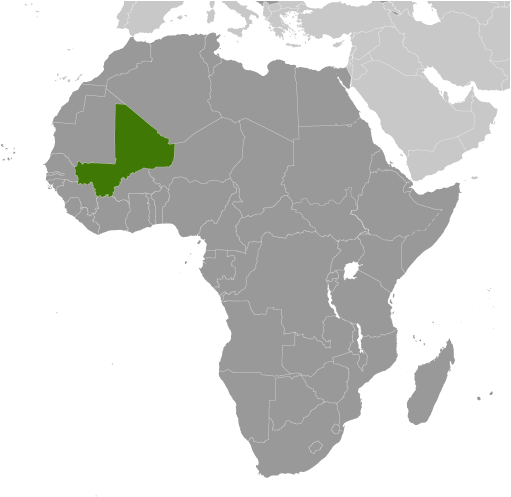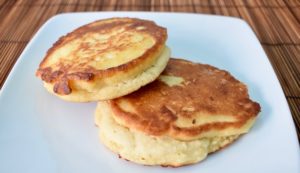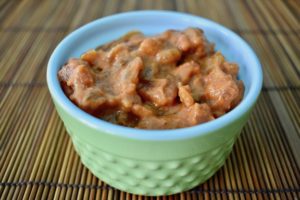 Lamb burger with burger on Maasa with Tomato Peanut Sauce
Lamb burger with burger on Maasa with Tomato Peanut Sauce
So happy to be back to writing! Thanks to Josh at HostDrive for fixing my website, I wish I had called sooner, you rock! And now we can get back to the business at hand.
Today, we return to Africa, the M’s are certainly a roller coaster – geographically speaking. Mali sounds to me like it should be an island country, but turns out it’s not even close, it’s landlocked. Which makes more sense when I read that Mali is the former Sudanese Republic. I can’t believe how out of date my country name recognition is.

courtesy of CIA World Factbook
It is nestled in Northeastern Africa surrounded by Mauritania, Algeria, Niger, Burkina Faso, Cote d’Ivoire, Guinea, and Senegal.

Courtesy of CIA World Factbook
Almost 18 million people live here and it is among the 25 poorest countries in the world. It is home to many ethnic groups; Barbara, Tuareg, Dogon, Songhai, Senufo and Fulani are the most prevalent. Over 90% of the population is Muslim with Suni Muslims in the majority. But what will be most familiar to Western readers is that Mali is the home of Timbuktu.
Even the name conjure up a vision of rich fabrics and the scent of incense and spices. Timbuktu was historically the trading post on the trans-Saharan caravan route and the center of Islamic culture. It was founded in 1100 BC on the southern edge of the Sahara as a seasonal camp by Tuareg nomads. The story is that it was named after an old woman who was left to oversee the camp with the Taureg roamed the Sahara.
By the 14th century, Timbuktu was flourishing. It was captured in 1591 by Morocco after which the city declined. Europeans arrive to the city in the early 19th center and it was captured by the French in 1894. The Republic of Mali achieved independence in 1960 (yet my schools still taught it as the Sudanese Republic, what’s up with that?). Today Timbuktu is impoverished like the rest of Mali, but many groups have worked to save and restore its landmarks. It is home to 3 of the oldest mosques in Western Africa and they are amazing structures.


For the last 20 years, political unrest and tension has been rampant in Mali. Violence, coups, refugees fleeing the northern part of the country, all of these and more have exacerbated the economic plight of Mali.
Culturally, Malians have a rich history. Music is central and essential. From 2001-2012 Malians hosted an annual Festival in the Desert music festival. Showcasing Tuareg music and music from around the world, it was a major draw to the area. Unfortunately security concerns have kept the festival from Mali for the last six years.
Food is, of course, important because of the scarcity and poverty in the country (although Mali is approximately twice the size of Texas, only 2% of the land is arable). But it is also important culturally. Because Mali was historically a trading center, the flavors of Mali are diverse and pull from many regional cuisines. Grains are critical in the Malian diet and maasa is a gluten free pancake that is usually eaten as a sweet treat, but i thought I’d turn that around and use it as the base for my burger. I went with lamb for the burger itself, meat is usually a part of meals, but rarely the centerpiece due to the expense, so sauces are incredibly important. Like Benin, Malians are fond of tomato based peanut sauces. These can be spicy, but more importantly they are complex with a rich blend of spices. Malians use a 14 spice blend in much of their cooking, many of the 14 ingredients just aren’t readily available here, so I did my best with what we have.
Let me confess (and apologies to my GF neighbor), I generally shudder when I hear Gluten Free. Gluten is a wonderful thing and it makes most baked goods, well, good. So I had to suspend disbelief to make the maasa, but I have to admit it turn out quite tasty. As with many GF recipes, these are best if used soon after cooking, they don’t reheat very well as the texture changes and gets dense. But fresh they are really good and make a great base for a burger.
As for the sauce, it’s divine. If you’ve been reading for a while (and thank you if you have), you’ll know that I love spices. I’ve love the layered flavors that you get particularly those from the cuisines in the Middle East and Southern Asia. Yes, it’s a lot of ingredients, but fortune favors the bold, so give it a try. The result is a sweet/spice balance that will bring the flavors of the spice markets of old Timbuktu to life. The lamb has room to sing, while the subtle peanut gives an earthy nuance to the vibrant and complex sauce. Together it’s a win.
If you like this burger, you’ve got to try my Benin burger (one of my husband’s favorites), and maybe just pull a few African recipes and open up your palate to some new and glorious flavors.
Malian Buger (click here for printable version)
4 Maasa pancakes (recipe below – requires 30 minutes for dough to rise)
1 pound ground lamb
Kosher Salt
2 teaspoons Peanut Oil
Unsalted Peanuts chopped (for garnish)
Scallions sliced (for garnish)
Malian Tomato Peanut Sauce (recipe below, can be made ahead)
Form four patties out of ground lamb and salt both sides of each patty. Heat oil in a medium pan over medium high heat until shimmering. Add the patties and cook until desired temperature (I recommend medium or medium rare). Place each cooked patty on a Maasa pancake and spoon sauce generously over top. Note: for the photo, I tried to ensure you could see the patty, but feel free to be more generous with sauce, this is definitely a fork and knife burger. Add some peanuts and scallions and you’re ready to go!
Maasa Pancakes
¼ cup milk warmed to 105°F
1 teaspoon yeast
1 Tablespoon sugar
1 cup millet flour
1 cup brown rice flour
½ Tablespoon baking powder
⅛ cup boiling water
¾ cup milk
1 Tablespoon ghee
Combine the warm milk, yeast and sugar and stir until sugar is dissolved. In a large bowl, add the remaining dry ingredients, use a whisk to combine the dry ingredients. Add the boiling water and milk to the bowl then add the yeast mixture (is should be foamy by now, if not your yeast may not be active or your milk may be too hot or too cold, try again). Mix all the ingredients – I find using my hands is easiest, but you can try it with a wooden spoon if you don’t like getting messy. Dover with a dry towel and let rise for 30 minutes in a warm place.
Warm the ghee in a nonstick pan. When ghee is melted, scoop batter into four pancakes. Cook until golden then flip and cook the other side until golden. Try to time this so that you can serve these while they’re hot. And, if you’re looking for a tasty GF treat, you can make these pancakes anytime and dust them with powdered sugar – they’re yummy!

Tomato Peanut Sauce
1 medium onion chopped
1Tablespoon olive oil
1 teaspoon ground cumin
1 bay leaf
¼ teaspoon ground cinnamon
2 dried thai chili peppers crushed
¼ teaspoon anise seed
6 juniper berries
½ teaspoon dried hibiscus tea*
1 teaspoon kosher salt
¼ teaspoon ground black pepper
1 teaspoon bean paste
2 ripe tomatoes chopped
2 Tablespoons tomato paste
Water
2 Tablespoons natural peanut butter (no sugar)
*If you can’t find a pure hibiscus tea, just look for a simple blend with few ingredients where hibiscus is the first ingredient. Hibiscus tea is sold both in the herbal and in the medicinal sections and it has a nice tart flavor – I am still enjoying the tea long after the burger has been consumed.
Saute the onion in the oil over medium heat until softened, add the spices and cook for 2 minutes, then add the rest of the ingredients. Cook over medium heat stirring until tomatoes get mushy, add water as needed while cooking and reduce the water out as tomatoes are cooking. This will take about 20-30 minutes depending on firmness of tomatoes, simmer the sauce, don’t boil it. When the tomatoes are mushy, reduce the excess water out of the sauce and add the peanut butter. Cook for 1-2 more minutes then serve. You want a thick consistency so that it tops the burger rather than drowning it.
This sauce can be made up to a week ahead and refrigerated until ready to use, then heat and serve.

©Copyright 2018 Linda Monach



So excited to see you able to continue this project!
Looking forward to next recipe!
Yay! Thanks for getting back to the recipes! Love reading this stuff.
Great, that you manage to start again. Looking forward to explore the richness of our world with you! Kind regards from Switzerland, Dominik